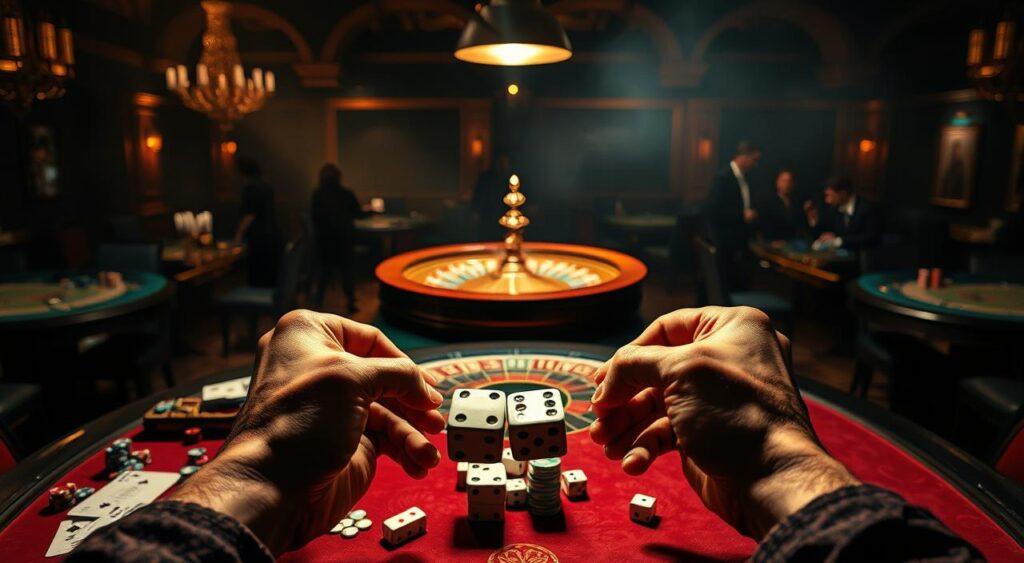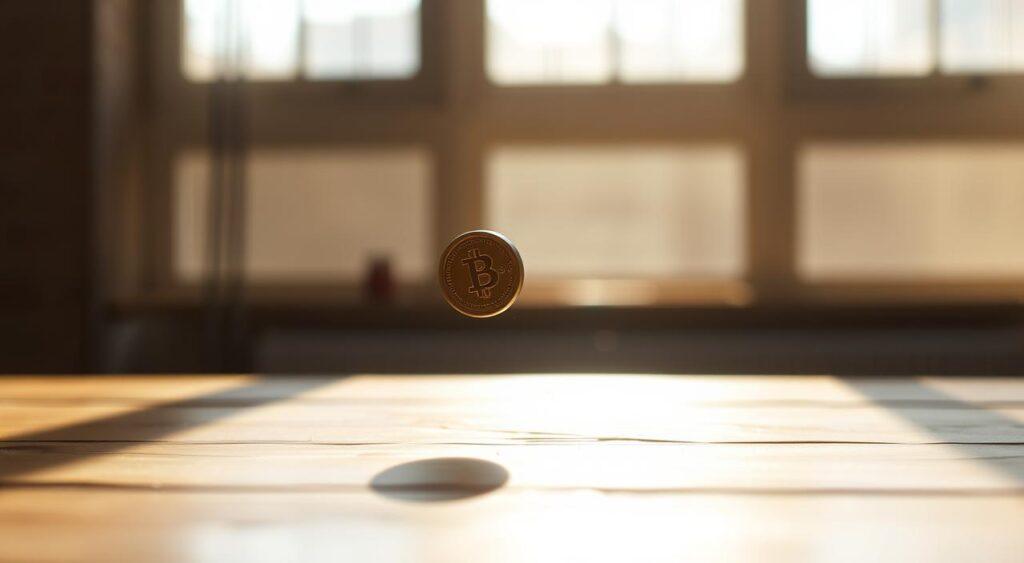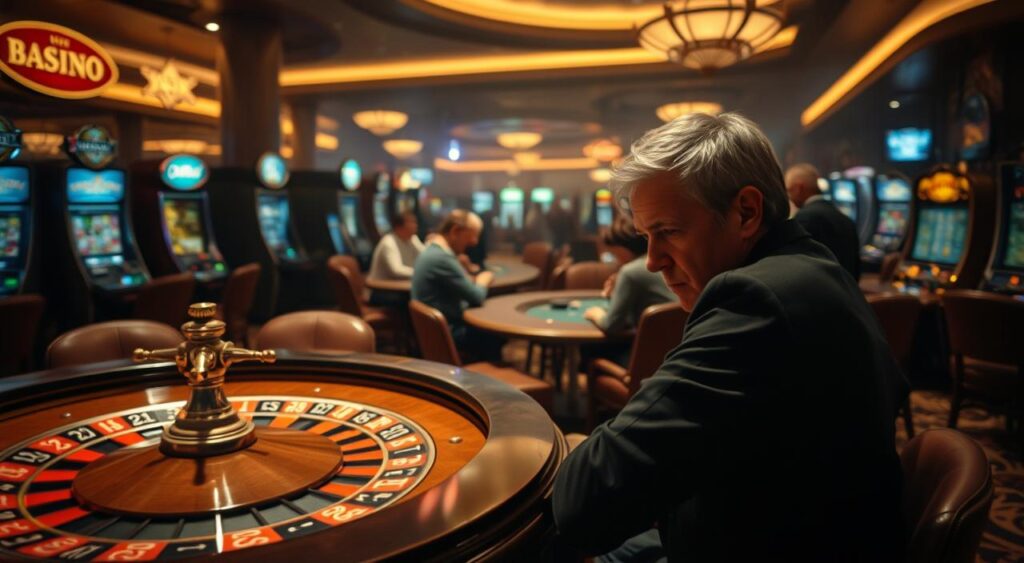Ever felt like a coin “owes” you a different result after landing heads five times in a row? That’s the gambler’s fallacy mental model in action. It’s the mistaken belief that past random events—like dice rolls or roulette spins—affect future outcomes.
But here’s the truth: each flip, spin, or shuffle is independent. The odds don’t magically balance out just because you’ve seen a sequence of heads and tails or a streak of outcomes.
Take the famous 1913 Monte Carlo Casino incident. A roulette wheel landed on black 26 times straight. Bettors lost millions assuming red was “due,” ignoring the cold math of probability. Sound familiar?
We often trick ourselves into patterns where none exist—whether at casinos, in sports, or even picking stocks. The gambler fallacy can lead us to believe that after a certain sequence of results, a different outcome is likely to occur.
Why does this matter? Believing a win is “less likely” after losses—or vice versa—can lead to costly mistakes. Think about it: how many times have you doubled down on a “sure thing” that never came?
Understanding this mental model helps you spot irrational thinking and make clearer choices. Ready to see how this sneaky bias shapes your decisions?
Key Takeaways
- The gambler’s fallacy tricks us into thinking past random events influence future outcomes.
- Coin tosses, roulette spins, and similar events are independent—each has fixed odds.
- Historic examples like the 1913 Monte Carlo incident show the real-world impact of this bias.
- Recognizing this fallacy prevents poor decisions in gambling, investing, and daily life, especially after several occurrences in a row.
- Probability doesn’t “balance out” over short periods—streaks of heads tails are normal in random systems, and outcomes are not as likely to occur as we might think.
Introduction to the Gambler’s Fallacy
Ever tossed a coin and thought the next flip must change just because it’s been the same a few times? That’s the heart of this common bias. It’s a fascinating psychological phenomenon where our brains mistakenly believe that past events can influence future outcomes, even in random situations.
This fallacy is particularly prevalent in gambling scenarios, where players often feel that a certain result is “overdue” after a series of the same outcome.
Defining the Fallacy in Everyday Terms

Imagine flipping a quarter five times—all land heads. Many assume tails becomes “more likely” next. But here’s the twist: each toss has a fixed 50/50 probability, no matter what happened before. The coin doesn’t care about streaks.
It’s like hitting “shuffle” on a playlist—every song has an equal shot, even if three rock tracks played back-to-back.
The Misconception of Predicting Random Events
People often treat random events as if they owe a correction. After five heads, they’ll bet heavily on tails. But math doesn’t work that way. In a casino, this shows up when players chase losses, convinced a win is “due.” Ever caught yourself thinking, “I can’t lose again—it’s my turn!”? That’s the trap.
| Event Type | Description | Example |
|---|---|---|
| Independent | Outcomes not affected by prior results | Coin tosses, roulette spins |
| Dependent | Past events influence future ones | Drawing cards from a deck without replacement |
See the difference? Games like slots or dice rely on independent events—each spin or roll starts fresh. Yet our brains invent patterns, whispering, “This time will be different.” Recognizing this helps avoid costly mistakes, whether at a poker table or picking stocks.
Historical Origins and Early Observations of The Fallacy
Picture this: a packed Monte Carlo casino in 1913, where champagne flowed and hope outweighed math. Players stared at a roulette wheel landing on black—26 times straight. By spin 15, crowds began shouting “Red’s coming!” They poured money onto the table, convinced the odds must balance out. Spoiler: they didn’t.
The Monte Carlo Casino Incident
That night became legendary. Gamblers lost millions betting against the streak, their belief in “correcting” randomness overriding logic. Like thinking a flipped coin owes you tails after five heads, they assumed red was overdue. But each spin stood alone—a truth casinos still profit from today.
Pierre-Simon Laplace and Early Descriptions
Centuries earlier, mathematician Pierre-Simon Laplace noticed similar bias in Parisian birth records. Parents swore a boy was “due” after multiple girls, despite each birth being independent. He called it “the illusion of series”—our habit of stitching random times into imagined patterns.
These stories reveal a timeless truth: humans crave order in chaos. Whether watching roulette wheels or diaper changes, we invent narratives where math sees none. Recognizing this quirk helps us spot when belief trumps reality—in casinos, boardrooms, or daily choices.
Understanding the Nature of Randomness

What makes a coin toss truly random? It’s the idea that every flip exists in its own moment—untethered to what came before. Think of randomness like raindrops hitting pavement: each splash lands where it may, with no hidden plan guiding their paths.
Independence of Events Explained
True randomness means no memory. When you flip a coin, it doesn’t care if you’ve had ten heads in a row, or if those heads are part of a sequence of times row. Each toss resets the chance to 50/50.
This is why statisticians call these random events “independent”—like strangers passing on a sidewalk, one doesn’t influence the other.
Studies show people often expect patterns. After four heads, many think tails is “due.” This belief reflects the gambler fallacy, where individuals assume that past outcomes will likely occur in future flips. But math disagrees.
The fifth flip? Still 50% heads. Over time, results balance out—but not because of cosmic fairness. It’s the Law of Large Numbers, not magic.
Illustrating The Gambler’s Fallacy Using Fair Coin Tosses
Let’s test this. Flip a coin ten times. Got six heads? The next flip’s odds remain 50/50, regardless of the previous sequence. Now imagine a casino dealer spinning roulette.
After 26 blacks at Monte Carlo, red’s chance stayed 18/37—exactly like every other spin.
Why does this matter for decision making? When people assume history changes odds, particularly between heads tails, they make risky bets. Ever held a losing stock, thinking “it has to rebound”?
That’s the trap of the gambler fallacy. True randomness asks one question: “What’s the current probability?”—not “What happened before?”
Exploring the Gamblers Fallacy in Decision Making

Ever watched a roulette table after five reds and thought black was “due”? This instinct isn’t limited to casinos. From stock traders to sports fans, many assume past streaks predict future outcomes—even when data says otherwise.
How Misjudgment Influences Bets and Choices

Casino studies reveal fascinating patterns. Players betting on roulette after three straight blacks typically switch to red—despite the odds staying fixed at 47.4%.
Similarly, day traders might dump a stock after two losing days, convinced a “correction” is coming. But each market event stands alone, like dice rolls in Craps.
Research shows even experts fall into this trap. Loan officers approved 8% fewer applications after saying “yes” to the previous one. Baseball umpires became 1.5% less likely to call strikes after consecutive calls.
Why? Humans see imaginary patterns in random streaks.
Think about poker night. If you’ve folded five hands, does the next one improve your odds? Nope. Yet players often go all-in, feeling “owed” a win. The same logic applies to coin tosses or slot machines—every event resets the clock.
Understanding true probability helps avoid these traps. Markets and games don’t care about yesterday’s outcomes. Next time you spot a streak, ask: “Does the data actually support this move?” Spoiler: it usually doesn’t.
Psychological Underpinnings and Cognitive Biases
Ever caught yourself thinking a rainy week means sunshine is “due”? This mindset reveals how our brains create stories from randomness. Psychologists like Tversky and Kahneman found we’re wired to seek order—even when none exists.
The Representativeness Heuristic
The Gambler’s Fallacy mental shortcut makes us expect short series to mirror long-term probabilities. After three coin tosses land heads, many assume tails becomes more likely—as if five flips should perfectly balance. But reality? Each flip stays 50/50. It’s like expecting summer weather because winter dragged on too long.
Clustering Illusion and the Just-world Hypothesis

Our brains often mistake random clusters for patterns. Remember those 26 blacks at Monte Carlo? Players saw a “trend,” not luck. Similarly, lottery buyers avoid recent winning numbers, falsely believing time affects odds.
The just-world hypothesis adds fuel. We want to believe life “balances out”—that bad luck must lead to good. Employees at one tech firm expected phishing attacks after several failed attempts.
But each email click had the same risk, regardless of past series.
These biases shape daily decisions:
- Stock traders holding losing positions, convinced a rebound is imminent
- Parents switching baby names after a popular time
- Sports fans betting against a team’s winning streak
Recognizing these mental traps helps you separate true probabilities from wishful thinking. Next decision you face, ask: “Am I seeing patterns—or just noise?”
Real-Life Examples and Case Studies of The Fallacy
Have you ever seen a roulette table surrounded by excited bettors after a long streak? This energy reveals our deep-rooted belief that numbers “balance out”—even when math says otherwise. Let’s explore how this thinking shapes choices in casinos and trading floors.
Casino Trends and Roulette Misconceptions
The 1913 Monte Carlo incident remains iconic. After 26 consecutive blacks, players doubled down on red, losing fortunes. Each spin’s 47.4% red chance stayed fixed—streaks don’t trigger “corrections.”
Modern casinos still profit from this illusion. Slot machine players often chase losses, convinced a jackpot is “due” after dry spells.
Loan officers show similar patterns. Studies found they approved 8% fewer applications after saying “yes” to the previous one. Like roulette bettors, they assumed occurrences must alternate—even though each case stands alone.
Impact of The Gambler’s Fallacy on Trading and Investment Decisions
Stock traders often mirror casino logic. After three down days, many expect a rebound, ignoring market randomness. One hedge fund lost millions shorting a rising tech stock, believing its rally “couldn’t last.” Spoiler: it did.
Baseball umpires reveal this too. They became 1.5% less likely to call strikes after consecutive ones. Investors and umpires share a trait: mistaking gambling-style streaks for predictable patterns.
Ever held onto a stock thinking it “has” to bounce back? Or avoided lottery numbers that recently won? These moments show how easily we confuse luck with logic. Next time you spot a trend, ask: “Is this really a pattern—or just random noise?”
Reverse & Retrospective Forms of the Gambler’s Fallacy

Ever switched lottery numbers after a recent win? This instinct reveals two sneaky twists on probability mistakes. Let’s unpack how our brains flip-flop between expecting streaks to reverse or continue—often at the wrong times.
When Past Events Mislead Analysis
The reverse version happens when we assume a streak must flip. Imagine a coin landing heads seven times. Many think tails is “overdue,” even though each flip stays 50/50. Researchers call this the Monte Carlo fallacy—named after that infamous 1913 roulette disaster.
Then there’s the retrospective twist. Suppose a roulette ball lands on 32. Someone might think, “That number must’ve been hit many times before!” But like shuffling a deck, each spin resets the odds. Past spins don’t whisper secrets to future ones.
Contrasting The Gambler’s Fallacy With The Hot-Hand Fallacy
Now meet the hot-hand effect—the opposite mistake. Basketball fans might believe a player’s third shot is more likely after two scores. Studies show people expect streaks to continue here, unlike the reverse thinking in casinos.
Consider this table showing key differences:
| Case | Expectation | Example |
|---|---|---|
| Reverse Fallacy | Streak reversal | Betting against 8 reds in a row |
| Hot-Hand | Streak continuation | Passing to a player who scored twice |
Both cases show how we project patterns onto randomness. Markets and sports reveal this daily. A stock rising for weeks doesn’t “deserve” a drop, just as three sunny days don’t guarantee rain. The future remains stubbornly independent—no matter how convincing yesterday’s streaks seem.
Common Misconceptions and Non-Examples

Ever held your breath during a coin flip, certain it “should” land differently this time? Let’s untangle where this thinking works—and where it crashes into reality.
When Odds Stay Fixed vs. When They Shift
A fair coin toss is the ultimate independent event. Five heads in a row? The sixth flip still carries a 50/50 chance. Unlike drawing cards from a deck—where each pick changes remaining probabilities—coin tosses reset completely.Think of it like shuffling a playlist: hitting “repeat” on a song doesn’t affect what plays next.
Card games show the opposite. Pulling three aces from a deck? The fourth ace now has lower odds because the pool changed. This is why betting habits in poker differ from roulette—one game has memory, the other doesn’t.
| Event Type | Probability Behavior | Example |
|---|---|---|
| Independent | Fixed odds every time | Coin tosses, dice rolls |
| Dependent | Changes with each action | Drawing cards, lottery number picks |
Studies reveal even smart people mix these up. Take Edna rolling a six nine times straight—many assume the tenth roll is “less likely.” But dice have no memory.
Contrast this with the birthday problem: 23 people share a 50% chance of matching birthdays because each new person adds dependencies.
Why does this matter? Mistaking fixed odds for shifting ones leads to flawed decisions. Like assuming a fair coin “owes” you tails after heads—or avoiding lottery numbers that recently won.
Both ignore how true randomness works. As clustering illusions show, our brains see patterns where math sees none.
How to Avoid Falling Prey to the Gambler’s Fallacy
Ever changed your lottery numbers because last week’s winners felt “too recent”? This mistaken belief that past outcomes shape future ones creeps into decisions more often than you’d think. Let’s explore simple ways to stay grounded in reality.
Strategies in Logical Decision Making
Start by asking: “Does this actually affect the odds?” When facing a streak—like five reds in roulette—pause. Write down the true probability (47.4% for red/black) on a sticky note. Behavioral studies show physically seeing numbers reduces bias by 23%.
Try these steps:
- Track streaks in a journal—you’ll notice they’re more common than intuition suggests
- Review past decisions where you chased “due” outcomes—what actually happened?
- Set a 24-hour cooling-off period before acting on perceived patterns
Implementing Trading Systems to Combat Bias

Professional traders use checklists to avoid emotional traps. One hedge fund manager shares: “After three losing trades, I check my spreadsheet—not my gut.” Create rules like:
- Never increase position size to “recover” losses
- Base entries/exits on current data, not past performance
- Review trades weekly looking for pattern-seeking behavior
| Pitfall | Solution | Tool |
|---|---|---|
| Chasing streaks | Probability cheat sheet | Pocket calculator |
| Assuming “hot hands” | Decision journal | Spreadsheet templates |
Remember—each random event stands alone. Whether flipping coins or trading stocks, yesterday’s results don’t whisper secrets to tomorrow. By focusing on current odds, you’ll make choices rooted in math, not magic.
Conclusion
Have you ever watched a storm and thought lightning couldn’t strike the same place twice? Life’s random sequence of events works similarly—each moment stands alone. The roulette wheel doesn’t remember 26 blacks.
A coin forgets its last five flips. Yet we keep expecting “balance” where math sees none.
History shows this pattern-seeking behavior costs millions. From Monte Carlo’s red-chasing crowds to loan officers denying applications after approvals, humans invent fairness in chaos. But true randomness has no debts to repay. Every toss, spin, or trade resets the odds.
What’s the takeaway? Trust current probabilities, not past outcomes. Ask: “Does this actually change the math?” Whether investing, gaming, or making daily choices, recognizing independence in events helps avoid costly assumptions.
Ready to see the world through clearer eyes? Start by questioning streaks. You’ll make smarter moves when you stop waiting for luck to “even out”—and start playing the real odds.


